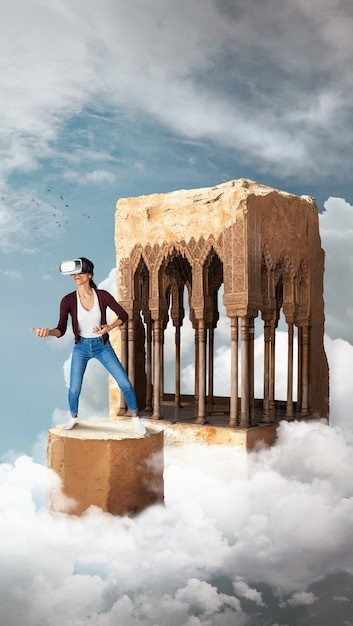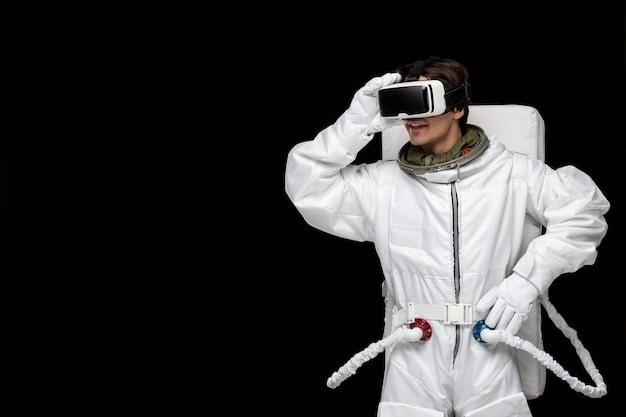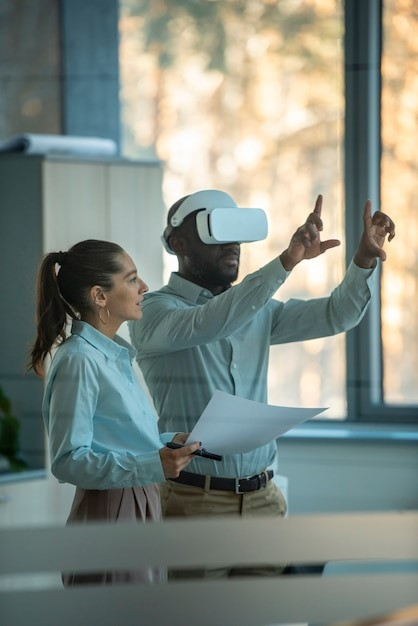Extended Reality: A Way to Redefine Future
Extended Reality (XR) is the combination of human and computer-generated graphics interaction, which is in reality as well as the virtual environment. XR allows people to visit places virtually, feel the same as they are present at that place, and interact with other individuals. Many science-fiction movies have used the concept of Extended Reality (XR) but operating it in the real world is very different than in the reel world. However, XR is stretching its wings to multiple industries and redefining procedures. The simulation created using XR technologies is not only limited to entertainment but can also potentially combat many real-life hazards.

Segments of Extended Reality
Extended reality (XR) is an umbrella term including but not limited to augmented reality (AR), virtual reality (VR), and mixed reality (MR). The letter X in XR represents a variable entity providing it the flexibility to incorporate any future technology that has the potential to blend physical and virtual worlds.
Augmented Reality (AR)
Augmented reality puts virtual objects and imaginations in the real world. It is used to create a sense of illusion in digital gadgets. The users still have access to the real world and they can fully interact in both dimensions. For instance, Pokémon-GO uses augmented reality providing the users the capability to interact with the real as well as a virtual world with the help of digital gadgets. Augmented reality is also used in the filters in many apps to create an illusion of presence that is not reality.
Virtual Reality (VR)
Virtual reality puts the users into a fully virtual environment where interaction is allowed only in the virtual world. The graphics generated are mostly computer and artificial objects are designed to give a feel of being real. The users can feel every bit of virtual reality. Special VR devices are needed to put users into this environment which gives them a 360-degree view of the virtual world.
Mixed Reality (MR)
Mixed reality is a combination of both AR and VR, where one can interact with the digital as well as the real world simultaneously, using MR devices. These devices give the power to interact with the surroundings digitally. One can throw a ball or close the windows digitally in your MR headset but in reality, things will remain as they are.
Applications of Extended Reality
XR is an important to entertainment in gaming, movies and immersive travel experiences
XR for entertainment and games currently constitutes the largest market segment. XR technologies have been increasingly used in gaming and lead the way into the metaverse. It brings gaming into your physical environment. Gamers can intimately feel what their selected scenes would resemble in the flesh, whether crossing into another era, or place or exploring fantastic futuristic worlds. They also give access to live music via headsets. XR can also be used to develop experiences where gamers can take on the role of a movie character. This will benefit movie promotion and increase platform reach. Further, XR has unlimited possibilities in movies, video immersion, and immersive travel experiences.
Ophthalmologists use XR for surgical training and visualization
Extended reality allows the development of surgical simulators, which can be used for ophthalmic surgical education to demonstrate efficacy and validity in improving surgical performance. Still, the widespread use of simulators demands budgeting and additional high-quality comparative studies. Additionally, they can also be used in therapy as this type of system provides an efficacious and safe platform for surgical visualization.
Space health simulators condition astronauts for celestial spaces

Spaceflight has detrimental effects on human health, imposing significant and unique risks to crewmembers due to physiological adaptations, exposure to physical and psychological stressors, and limited capabilities to provide medical care. XR simulators have increasingly been adopted for training and real-time clinical, and operational support in both terrestrial and aerospace settings.
The healthcare industry uses XR for 3D imaging, virtual examination, patient training, record management, and examination
XR technologies make the interaction with three-dimensional images of anatomical structures possible thus contributing to the training of surgeons. Additionally, this also enables the virtual examination of organs or body systems. This makes medical procedures safer and more effective. Further, VR-based technology can potentially aid with psychotherapy for addiction disorders by monitoring patients’ responses to simulated situations, without exposing patients to actual situations. Also, XR tools can assist doctors in the examination of patient records, such as MRI scans.
IoT Scenario like data visualization and network management
XR technologies are helpful in the visualization of IoT data, network management of IoT devices, and 3D visualization of smart buildings and cities. However, it faces the challenge of incorporating IoT data in XR applications which can be addressed by the use of a data communication model that allows the translation of IoT data into XR objects, events, or scenarios.
XR as a way to train workforce before exposing them directly to the on-site risk

XR technologies can be incorporated into workplace collaboration and training to improve the efficiency and skills of the employees at a lower cost and with less risk. They are being increasingly used in nuclear power plants to train workers virtually before they actually operate complex systems. In the construction industry, architects, engineers, and project managers can collaborate in a virtual environment to plan and oversee projects. XR tools can also be used to improve the security procedures to better protect the physical and operational security.
Challenges to Extended Reality
Expensive technological and hardware requirement
The XR devices are normally heavier on the budget. This can be attributed to the technological and hardware requirements in their making. This often limits their access to the common masses while considerably affecting their sales. The lower sales result in the degradation of investment.
Development of compact yet sophisticate hardware
The use of many diverse technologies, software & and components makes it difficult for the companies to design and further develop an ideal hardware that is robust, compact, and economical.
Ensuring data security and management
Privacy is a challenge that will be faced both by the users as well as the companies. Since XR devices are required to create an environment based on the user requirement, a lot of private details might be needed to create the same. This will add up to the data storage and management cost for the company and data privacy might concern the users.
In a nutshell, extended reality is a vast field and rigorous research is required to uncover its full potential. It would not be wrong to say that the stream is still in its initial phase and requires development on diverse fronts including cost, security, and technology to list a few. Also, it would not be wrong to say that the major changes and contributions to XR would be subject to the advances in the field of artificial intelligence that can significantly assist in making the experiences feel real.